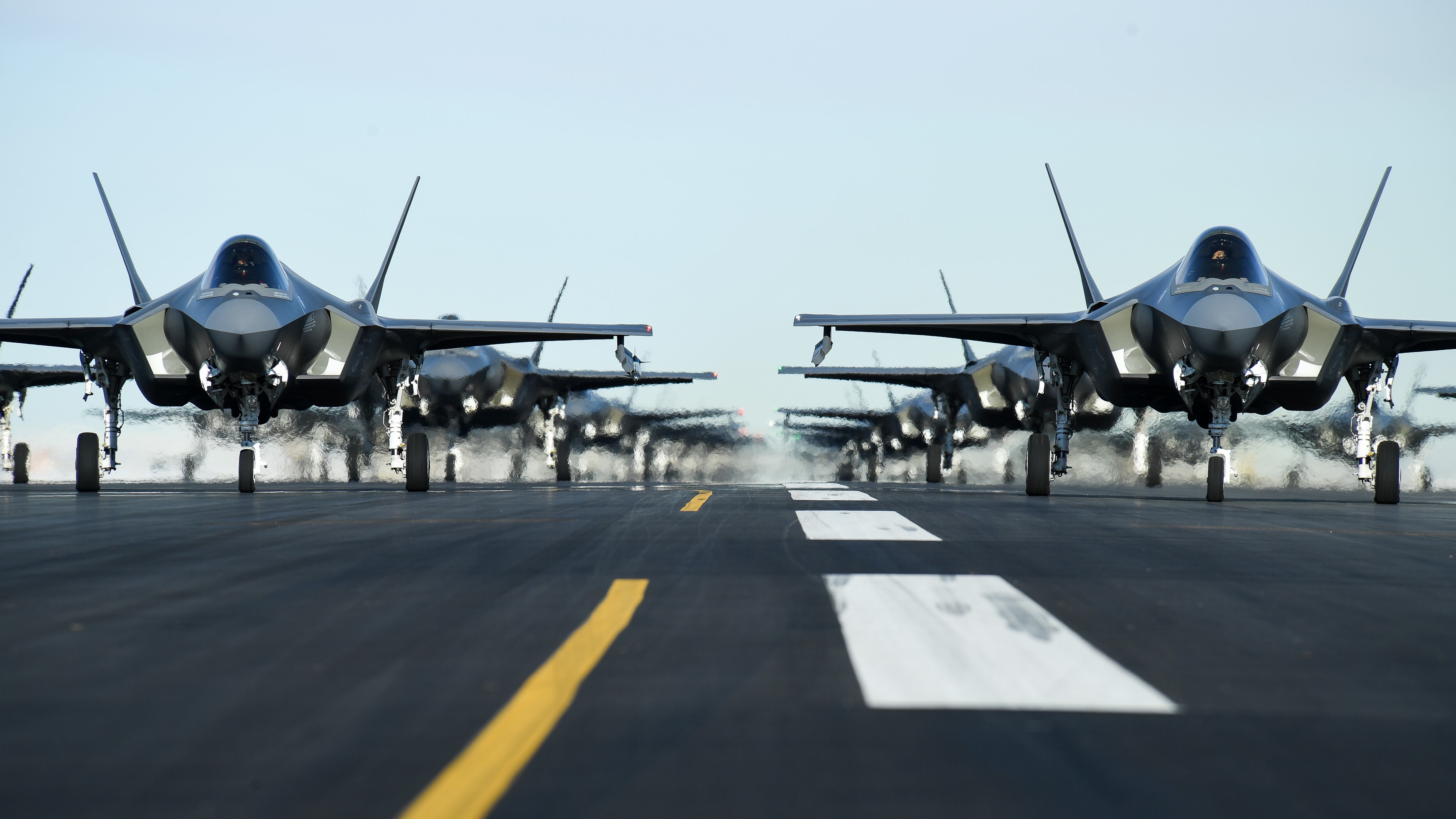Story edited on 9/9/21 at 3:50 p.m. EST with a clarifying statement from U.S. Air Force Chief of Staff Gen. CQ Brown.
WASHINGTON—The U.S. Air Force’s top general backs proposed legislation that would cap the number of F-35s the Defense Department can buy unless it meets affordability goals for operating and sustaining the jet.
The House Armed Services Committee’s version of the fiscal 2022 defense policy bill — approved by the committee last Thursday — would require the Air Force, Navy and Marine Corps to meet targets for “cost per tail per year,” which measures the average cost of flying, maintaining, and upgrading the jet.
Asked about the provision during the Defense News Conference on Wednesday, Air Force Chief of Staff Gen. CQ Brown indicated he would support the proposed cost constraints.
“The language from Congress is really in line with what we’re trying to get done,” Brown said.
“One of our goals is to actually make this [program] affordable, and to make the sustainment costs affordable,” he said, calling it a “focus” for the service.
On Sept. 9, Brown clarified in a statement to Defense News that “his comments are not tied to any particular legislation and instead speak to ongoing efforts with Congress and industry partners to achieve affordability goals.”
The Air Force plans to buy 1,763 F-35A conventional takeoff and landing models throughout the program of record. However, the total lifecycle cost of supporting that number of aircraft remains more than what the service projects it can afford.
In FY20, it cost the Air Force about $8 million to operate and sustain each F-35A — about twice the target cost per tail per year of $4.1 million.
By 2036 — when F-35 operations reach their peak — the gap between that metric and the actual cost could amount to a recurring annual charge of $4.4 billion, according to a July report from the Government Accountability Office.
The proposed language is meant to induce Lockheed Martin and the Defense Department to work together on a solution that will lower sustainment costs, said HASC Chairman Rep. Adam Smith, D-Wash.
“If you bring the sustainment cost down, we’ll buy more,” Smith said during a Aug. 31 event at the Brookings Institution. “If you don’t, we’re not going to, simply because of the cost that is involved in that.”
The HASC version of the National Defense Authorization Act still needs to make it over several legislative hurdles before it becomes law. The House will be able to amend the bill before it passes through the lower chamber. Then, HASC lawmakers will work with their counterparts in the Senate Armed Services Committee on a final version of the bill.
It’s unclear whether SASC will be supportive of the F-35 cost constraints; its NDAA contained no such language to limit F-35 procurement.
If the provisions do become law, the Defense Department will have its work cut out for it as it tries to meet affordability targets.
The GAO has criticized the F-35 program’s stakeholders — which include the services, the F-35 joint program office, Lockheed and engine manufacturer Pratt & Whitney — for having “unique and differing perspectives on affordability” that make it difficult to come to a consensus for how to best attack the problem.
But Brown said Wednesday he believes the organizations are “all committed to the same thing. … Make the sustainment cost more reasonable.”
Valerie Insinna is Defense News' air warfare reporter. She previously worked the Navy/congressional beats for Defense Daily, which followed almost three years as a staff writer for National Defense Magazine. Prior to that, she worked as an editorial assistant for the Tokyo Shimbun’s Washington bureau.




